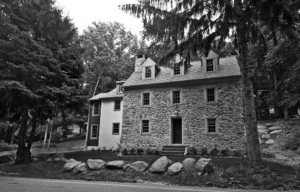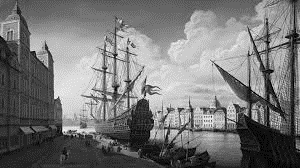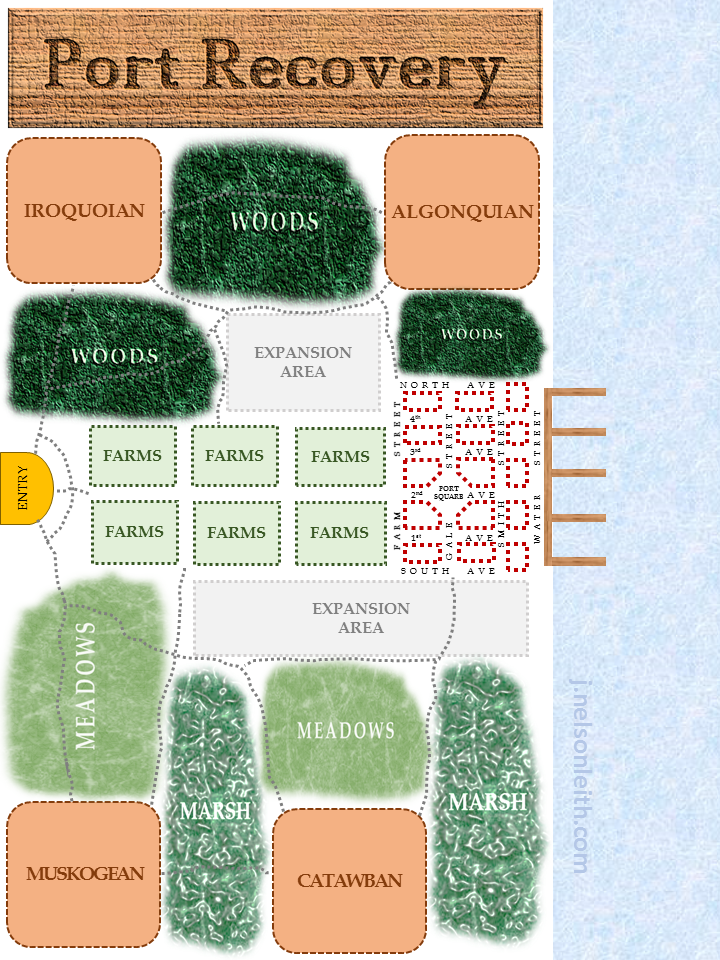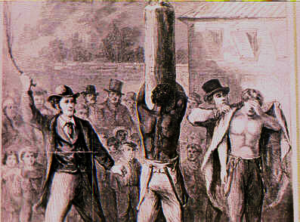 Get this: When WW3 breaks out, it involves several parallel Earths discovered by many-worlds technology.
Get this: When WW3 breaks out, it involves several parallel Earths discovered by many-worlds technology.
What is it? A television drama in which our universe is visited by scientists from another Earth using technology that exploits the many-worlds theory of quantum physics. Soon, two other parallel Earths are accessed, one of which is ruled by an authoritarian dictatorship. Alpha, Beta, and Delta Earth join in an Alliance to fend off attacks from Gamma Earth. The plot follows three groups: a joint team of Allied commandos; a team of Allied engineers who are working with both the military and business to manage access between worlds and thwart the Gammans; and a loose collection of Allied politicians, diplomats, and generals trying to hold together their tense Alliance, defeat the Gammans, and contend for the end-game of the War. There is also an wily Alphan businessman profiting from the war and a gifted Gamman warleader who is a threat both to the Alliance and her own colleagues.
Working title: MULTIPLE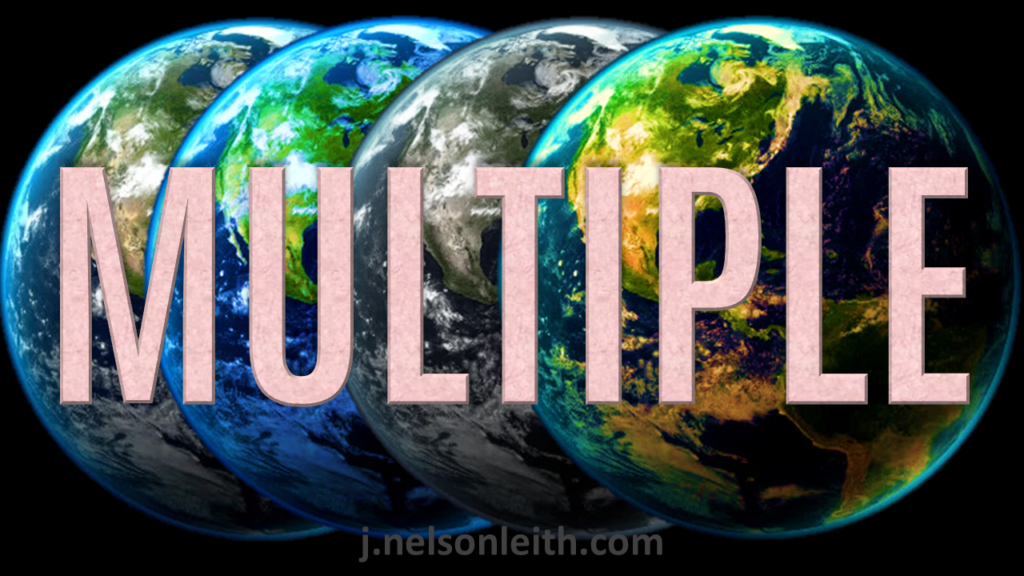
Storyrunner details: The “bible” of this drama would involve four basic factors. First, a description of the alternate Earths, their cultures, histories, and politics. Second, a sketch of the main characters and the secondary characters surrounding them. Third, a brief synopsis of the ongoing plotlines. Fourth, guidelines on the technologies used by the Alliance and their Gamman foes.
THE FOUR WORLDS (& FOUR MAIN CHARACTERS)
The culture of the setting is divided by the four parallel realities. Beta Earth is our world in the near future, with very similar technology to today. Alpha Earth, which developed the many-worlds tech, is very similar to ours wherein most of the politics, technology, and culture are the same, with minor differences, mostly in terminology, a fact that can be used as a running joke driven misunderstandings between characters. For example, imagine an Alphan commando asking for an “MPT” only to meet confused silence, then an in-the-know teammate explaining that “MPT” stands for “multi-purpose tool” which Betans and Deltans just call a multi-tool.
Alpha is slightly more advanced technologically, primarily in the physics that allows accessing parallel worlds. Alphans also have advance AI, something explained later in the discussion on Deltans. Betans are somewhat ahead in genetics, giving them an advantage in curing diseases and providing soldiers immunity to chemical and biological attacks.
The lead Betan character is Commander Kim Rugby, a Korean-American Navy Special Forces demolitions specialist with doubts about his ability to lead the team of Allied commandos infiltrating Gamma Earth. The lead Alphan is Lesley Chambers, an Australian entrepreneur who wants to exploit Betan and Deltan resources for profit, but under the guise of promoting the Alliance. They form mirror characters, Rugby being a humble, upright character who learns to trust his abilities while Lesley is a confident, corrupted character who begins to recognize his moral flaws.
A strong rivalry between Alpha and Beta (our Earth) would be central to the story. There would be a sense of “why weren’t we first?” among many Betans, and a paternalistic attitude of assumed superiority among some Alphans. Betans resent being designated Beta, and feel like the baby siblings who never quite measure up. It makes Beta characters try too hard and take too many risks.
Despite their differences, both Alphans and Betans have an optimistic attitude about the Alliance against the Gammans, something the Deltans (described below) do not share.
Gamma Earth is an authoritarian dictatorship based loosely on Orwell’s IngSoc. The supreme leader is a quasi-mythical woman, Babi Shen, often referred to as Abuelita, Spanish for “little grandma.” She is served by five regional dictators known as the Fosters. The ruling party, the Aequitat, is a play on the Latin words aequitas/equitas meaning “equality” and equitatus meaning “riding” in reference to the horse-riding warrior class. It is unclear (at first) whether Abuelita is a real person, or was a real person who has been dead for a while, her role having been replaced by the Fosters acting in committee.
The Aequitat operates on a model of purported “equality” in service to Global Justice, meaning all people having the same obligations and privileges. How this plays out is that everyone has the same obligation to work for the Aequitat—as dictated by Abuelita and the Fosters—and is “privileged” to the same basic sustenance, something that exists more in theory than practice. Dissenters are sent to Redemption Camps, where they are tortured into apologies or executed. Most citizens live in a state of deprivation and near-starvation.
After being discovered by Alpha, the Aequitat develops a many-worlds narrative that the anti-Justice alternate realities are “drawing quantum energy” from Gamma, thus causing the famine and starvation that is, in reality, the result of Aequitat policies. According to the narrative, only if the Aequitat controls all alternate Earths can true Equality and Justice be achieved. This narrative precipitates the invasion of Alpha and Beta by the Gammans.
The lead Gamman character is Amber Desta, Foster of Pan-Africa, whose efforts to infiltrate the other worlds is most effective. She is trying to subordinate the other Fosters, and may be trying to usurp the power of Abuelita herself.
The Gammans’ primary technological advantage is in chemical and biological agents that instill various neurological states, like fear or confusion, which they deploy freely on the battlefield. Betans’ genetic tech, rewriting the code of soldiers, is the primary defense against these weapons.
Delta Earth was discovered as tensions between Alpha, Beta, and Gamma were ramping up to war. Delta Earth had recently suffered severe famines and wars driven by politics similar to that represented by the Aequitat Gammans. This fallen global government, called the Equity Coalition, was defeated by local resistance movements fifteen years before Delta was accessed. During this devastating war, the local movements joined in a loose and tension-riddled coalition first known as the Nationalist League, but renamed the Delta League after the Alphans brought Delta into the Alliance.
Deltans have very primitive technology and poorly developed resources, but are highly zealous against the Aequitat. Their multi-regional coalition struggles against racial and religious supremacists factions, but generally holds together against the Aequitat’s ideology of Global Justice. Deltans generally feel that different groups are always in competition and thus all alliances are built on tension, an attitude that Alphans and Betans find brutal and pessimistic.
Deltans, like Alphans, have an advanced AI technology. But, whereas the Alphans have focused on heavily user-dependent AI that serves only to augment tactical soldiers, the Deltans created independent robotic AIs in their resistance to the Equity Coalition. On Delta Earth, these robots continue to keep the peace, perform manual labor, suppress pirates and terrorists, and settle regional conflicts. Alphans, having endured a bad experience with independent robotic AIs, have banned Deltan robots from the Alliance.
The lead Deltan character is Eli Pahl, the general who struggles to hold together his world’s military league while wrestling with his Alphan and Betan counterparts to get crucial resources to his devastated home. Despite his weak position among the Allied diplomats, he is a military virtuoso, a perfect counterpoint to Amber Desta.
CHARACTERS
As mentioned above, the story primarily follows three sets of characters: a joint commando team consisting of Alphan, Betan, and Deltan warfighters; a team of Allied engineers managing business and military clients who need access to the various worlds; and a circle of politicians, diplomats, and military officers managing the Alliance. There are also Gamman enemy characters focused on Foster Amber Desta and a prominent Allied businessman, Lesley Chambers.
The commando team is assigned to infiltrate Gamma Earth and destroy sites devoted to accessing the other worlds. The team is led by Betan Commander Kim Rugby, a Korean-American Navy Special Forces demolitions specialist with doubts about his ability to lead. His second-in-command is Alphan Lieutenant Roma Erb, a Prussian Army cyber officer with a thorough education in military theory. In the Alpha universe, Prussia was reconstituted in the aftermath of World War 2 in a joint Soviet-Allied effort to break up Germany into smaller states. As the tactical AI the team uses is based on Alphan cyber technology, Erb has a bit of an advantage on her commanding officer.
Also on the commando team are: Mary “Wormy” Saint-Paul, an East American sniper from Delta Earth with a vendetta against the Aequitat based on the Deltan Equity Coalition’s murder of her family; Diana Vachon, a Betan Canadian intelligence officer who knows multiple languages and is key to the team’s infiltration of Gamma Earth; and Agamemnon “Aggie” Lynch, an Alphan Australian medic. There are also four other “red shirt” riflemen to fill out the team: Jamie, Kani, David, and Diego.
The engineer team provides the exposition on the many-worlds technology, in the context of providing the military with means to detect and thwart Gamman infiltrations and providing businessmen ways to spur Alliance commerce. The team is led by Dr. Steven Rivers, a middle-aged Alphan physicist who was part of the original team who discovered the technique for accessing alternate worlds. His two deputies are: autistic genius John Oballa, Betan Nigerian-British engineer who handles the technical aspects of many-worlds access; and socially adept Muriel Jefferson, Deltan West American partner relations expert who manages the team’s contracts. Oballa and Jefferson are, in a sense, mirror characters who are constantly feeding Rivers conflicting advice.
The engineer team also includes: Jimmy Landing, Alphan Scandinavian coder, who works heavily with Rivers and Oballa on access issues; Hawk Brewer, Deltan South African security consultant, who frets about business interests distracting from the war effort, and particularly concerned by the Gamman invasion of Delta Africa; and Gardner Perry, Betan American counter-intelligence expert, somewhat paranoid about the threat of Gamman infiltrators.
The Alied political circle is led by the Secretary General of the Alpha Military Confederacy, Tolga Washington, a Turkish-American diplomat who nominally manages the Alliance against the Gammans. He interacts with Susan Colberg, the Betan president of the United States, who leads the Betan Coalition, and Eli Pahl, the general who heads the Deltan League. Susan is obsessed with bringing Betan technology up to Alphan standards, and contests with Washington over technology sharing agreements. Eli seeks to gain access to Alphan and Betan resources for the deprived people of Delta Earth.
Washington interacts intimately with Dr. Rivers and Commander Kim’s second-in-command Lieutenant Erb, promoting Alphan interests in the access to alternate worlds. Colberg interacts with Kim, seeking behind-the-scenes information on the war effort, and with physicist John Oballa to learn about the latest developments in many-worlds tech. Pahl interacts with Wormy, seeking intelligence on Gamman many-worlds technology and ways to reroute resources to Delta Earth.
A primary character outside of these factions is Lesley Chambers, an Alphan Australian entrepreneur who wants to exploit Betan and Deltan resources for profit, but under the guise of promoting the Alliance. He is a rich, entitled playboy who has never had to confront the consequences of his ambition. But, the unfolding storyline forces him to face those consequences.
A final primary character is Gamman Amber Desta, Foster of Pan-Africa, whose efforts to infiltrate the other worlds is most effective. She treats Foster Craig of Europe and Foster Joya of North America as lieutenants, and actively strives to subordinate the other Fosters. She is an ambitious military and political leader.
STORYLINES
The primary storyline focuses on Gamman intrusions on the other worlds, and how the Alliance can thwart this. Gammans have used many-worlds technology to invade Africa and North America on Delta Earth, Asia and Australia on Beta Earth, and Europe and South America on Alpha Earth.
The commando team led by Commander Kim Rugby is devoted to destroying Gamman infiltration sites, so this is core to their storyline. At the same time, there is tension in the topic of inter-world infiltration, something that involves their communication with both the scientist and diplomatic groups. The scientist team wants to thwart the Gammans while also providing greater access to commerce. The diplomatic characters are focused on increasing access points for their own ends, Deltans seeking to alleviate the poverty of their world, Betans seeking scientific advances to bring themselves up to Alphan standards, and Alphans seeking to solidify their dominance over the Alliance.
This brings in a secondary focus, the need for greater economic accesses among the Alliance. The Alphans and Betans are trying to avoid accesses that favor Deltan interests, worried that this would drain the Alliance’s resources, while Deltans (Pahl and Jefferson) want more resources to flow into Delta Earth. Chambers plays the role of quasi-villain in this dynamic, manipulating Dr. Rivers and Secretary General Washington for his own ends.
A third focus is the efforts by Foster Desta to recruit members of the Alliance to betray them for the Aequitat. Her primary targets are Aggie Lynch, Hawk Brewer, and Chambers, whom Desta promises a prominent place among the planners of the post-war economy. Her agents are: John Frink, a Gamman who poses as a resistance fighter to infiltrate the commando team; Anna Meer, a Gamman infiltrator who tempts Hawk with a sexual relationship; and, Yvonne Rojas, a Gamma-sympathetic Alphan actress who seduces Lesley Chambers.
Major plot-points to be planned for include: Chambers’s ultimate decision to undermine inter-world commerce to support his place in the post-war Aequitat role as Economic Minister (promised by Desta) and his subsequent regret; Washington’s troubled decision to allow greater distribution of resources to Delta World to ease their suffering, diverting precious military resources to humanitarian ends, which alienates him from both Alphan and Betan factions; Dr. Rivers’ discovery of Hawk Brewer’s fling with the Gamman agent Anna Meer, and his internal debate on how to react to that; the commando team’s discovery that the Gammans are seeking to access new worlds to bring into their effort; the science team’s identification of Epsilon, Zeta, and Eta Earths and attempts to access them for support; and the Gammans’ deployment of nuclear weapons to annihilate entire cities in alternate worlds.
A key underlying sub-plot focuses on the status of the leader of the Gammans, Abuelita. The commando team discovers evidence that Babi Shen is alive, but has been sidelined by Foster Desta in her ambition to lead the Fosters. Secretary General Washington uses that information to promote a propaganda campaign against the Aequitat, promoting pro-Abuelita resistance against Desta. Deltans are heavily suspicious of this, including General Eli Pahl, who feels any support for an Aequitat resistance promotes the sort of politics that devastated Delta Earth. Pahl also warns Washington that this could backfire, strengthening the support for Desta, whom Pahl considers the most dangerous Gamman leader.
TECHNICAL DETAILS
Key to the heavily military nature of the story is warfaring technology. The Alphans have tactical AI networks of interacting smart suits that build a virtual reality map of the surroundings incorporating visual, audial, and chemical cues that the individual soldier might have missed. Predicted threats appear on a heads-up display in the suit’s helmet, and individual location and health data is constantly processed and transmitted to leadership and medic personnel.
Alphans allow their allies to use this technology, but are very careful about sharing the underlying science, something that irks the Betans. For their part, Betans have technology much like Earth’s present tech. The one technology where they have an advantage over the Alphans is gene-editing tech, which they use to cure diseases and instill soldiers with resistance to the chemical and biological weapons of the Gammans.
The Deltans have extensive AI technology as well, but focused on robotics. Despite their poverty, much of their economy is buttressed by robots, something that ironically makes it difficult for Deltans to find work as laborers. They also have well-developed military robots, which the Alphans have banned from the Alliance due to their own strict legal standards on the use of independent AI, a policy that is the result of a proxy war between the US and China in Nigeria where robots devastated human combatants. Eli Pahl is highly resentful of the Alphan ban, because he understands that Deltans have learned to build in safeguards against the atrocities that the Alphans experienced.
The Gammans are, in terms of AI and genetics, behind the other worlds, but they have excelled at chemical and biological weapons, particularly those with neurological effects. Their biological advances were made by brutal experimentation more than genetic engineering. They have chemical and biological agents that induce fear, submission, rage, confusion, confidence, euphoria, and sexual promiscuity. Gammans have also discovered means of creating larger many-worlds access points (“gates”) which can be held open indefinitely, a great advantage in the war.
As the many-worlds access points are relatively small, they can only be used to move troops and small equipment. The Alliance can generate “gates” about 10×10 meters, restricting their incursions to infantry and small vehicles like tanks and supply trucks. Gamman “gates” are about 30×30 meters, allowing larger equipment like small aircraft. Constructing anything larger requires setting up a manufacturing facility in enemy territory. Unlike the Gammans’ indefinite access, Allied “gates” can only be held open for fifteen minutes or so six times a day, restricting movement and communications for the Alliance.
Finally, “gates” can only be established at particular points on the surface of the two Earths being linked, where geomagnetic dynamics allow. Minor differences in geological history create huge differences in these dynamics. For example, the magnetic poles on Alpha and Beta Earth are generally in-synch, while those on Gamma and Delta Earth are very different. This dynamic makes the search for potential gate sites very important to the war.
LIKE THIS IDEA?
If you like this idea, first I thank you. I tend to be an “idea guy” who comes up with lots of concepts that call for investments of resources and personnel to flesh out and make reality. You can be part of this by sharing this expanded Elevator Pitch as widely as you can in social media. If you do, leave a comment with links to where you’ve shared it, and I won’t forget you.





